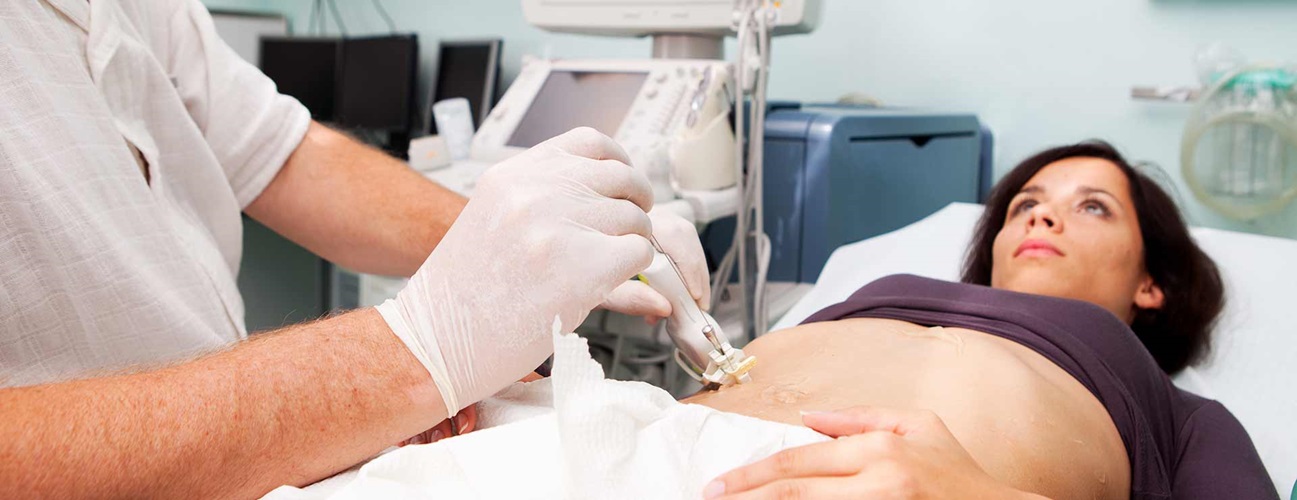Chronic Liver Disease/Cirrhosis
What is cirrhosis?
Cirrhosis is when scar tissue replaces healthy liver tissue. This stops the liver from working normally.
Cirrhosis is a long-term (chronic) liver disease. The damage to your liver builds up over time.
The liver is your body’s largest internal organ. It lies up under your ribs on the right side of your belly.
The liver does many important things including:
- Removes waste from the body, such as toxins and medicines
- Makes bile to help digest food
- Stores sugar that the body uses for energy
- Makes new proteins
When you have cirrhosis, scar tissue slows the flow of blood through the liver. Over time, the liver can’t work the way it should.
In severe cases, the liver gets so badly damaged that it stops working. This is called liver failure.
What causes cirrhosis?
The most common causes of cirrhosis are:
- Hepatitis and other viruses
- Alcohol abuse
- Nonalcoholic fatty liver disease (this happens from metabolic syndrome and is caused by conditions such as obesity, high cholesterol and triglycerides, and high blood pressure)
Other less common causes of cirrhosis may include:
- Autoimmune disorders, where the body’s infection-fighting system (immune system) attacks healthy tissue
- Blocked or damaged tubes (bile ducts) that carry bile from the liver to the intestine
- Use of certain medicines
- Exposure to certain toxic chemicals
- Repeated episodes of heart failure with blood buildup in the liver
- Parasite infections
Some diseases passed from parent to child (inherited diseases) may also cause cirrhosis. These may include:
- Alpha1-antitrypsin deficiency
- High blood galactose levels
- Glycogen storage diseases
- Cystic fibrosis
- Porphyria (a disorder in which certain chemicals build up in the blood)
- Hereditary buildup of too much copper (Wilson disease) or iron (hemochromatosis) in the body
What are the symptoms of cirrhosis?
Your symptoms may vary, depending on how severe your cirrhosis is. Mild cirrhosis may not cause any symptoms at all.
Symptoms may include:
- Fluid buildup in the belly (ascites)
- Vomiting blood, often from bleeding in the blood vessels in the food pipe (esophagus)
- Gallstones
- Itching
- Yellowing of the skin and eyes (jaundice)
- Kidney failure
- Muscle loss
- Loss of appetite
- Easy bruising
- Spider-like veins in the skin
- Low energy and weakness (fatigue)
- Weight loss
- Confusion as toxins build up in the blood
The symptoms of cirrhosis may look like other health problems. Always see your healthcare provider to be sure.
How is cirrhosis diagnosed?
Your healthcare provider will look at your past health. He or she will give you a physical exam.
You may also have tests including:
- Blood tests. These will include liver function tests to see if the liver is working the way it should. You may also have tests to see if your blood is able to clot.
- Liver biopsy. Small tissue samples are taken from the liver with a needle or during surgery. The samples are checked under a microscope to find out the type of liver disease.
Your healthcare provider may want you to have imaging tests including:
- CT scan (computed tomography). This is an imaging test that uses X-rays and a computer to make detailed images of the body. A CT scan shows details of the bones, muscles, fat, and organs.
- MRI (magnetic resonance imaging). This test makes detailed pictures of organs and structures inside your body. It uses a magnetic field and pulses of radio wave energy. A dye may be shot (injected) into your vein. The dye helps the liver and other organs to be seen more clearly on the scan.
- Ultrasound. This shows your internal organs as they work. It checks how blood is flowing through different blood vessels. It uses high-frequency sound waves and a computer to create images of blood vessels, tissues, and organs.
If you have fluid in the belly (ascites), you may need a low sodium diet, water pills (diuretics), and removal of the fluid with a needle (paracentesis).
How is cirrhosis treated?
Cirrhosis is a progressive liver disease that happens over time. The damage to your liver can sometimes reverse or improve if the trigger is gone, such as stop drinking alcohol or if the virus is treated.
The goal of treatment is to slow down the buildup of scar tissue and prevent or treat other health problems.
In many cases, you may be able to delay or stop any more liver damage. If you have hepatitis, it may be treated to delay worsening of your liver disease.
Your treatment may include:
- Eating a healthy diet, low in sodium
- Not having alcohol or illegal drugs
- Managing any health problems that happen because of cirrhosis
Talk to your healthcare provider before taking prescription medicines, over-the-counter medicines, or vitamins.
If you have severe cirrhosis, treatment can’t control other problems. A liver transplant may be needed.
Other treatments may be specific to your cause of cirrhosis, such as controlling excessive iron or copper levels, or using immune suppressing medicines.
Be sure to ask your healthcare provider about recommended vaccines. These include vaccines for viruses that can cause liver disease.
What are the complications of cirrhosis?
Cirrhosis can cause other health problems such as:
- Portal hypertension. The portal vein carries blood from your intestines and spleen to your liver. Cirrhosis slows the normal flow of blood. That raises the pressure in the portal vein. This is called portal hypertension.
- Enlarged blood vessels. Portal hypertension may cause abnormal blood vessels in the stomach (called portal gastropathy and vascular ectasia) or enlarged veins in the stomach and the food pipe or esophagus (called varices). These blood vessels are more likely to burst due to thin walls and higher pressure. If they burst, severe bleeding can happen. Seek medical attention right away.
- Ascites. Fluid collecting in your belly. This can become infected.
- Kidney disease or failure
- Easy bruising and severe bleeding. This happens when the liver stops making proteins that are needed for your blood to clot.
- Type 2 diabetes. When you have cirrhosis, your body does not use insulin properly (insulin resistance). The pancreas tries to keep up with the need for insulin by making more, but blood sugar (glucose) builds up. This causes type 2 diabetes.
- Liver cancer
Key points about cirrhosis
- Cirrhosis is when scar tissue replaces healthy liver tissue. This stops the liver from working normally.
- Cirrhosis is a long-term (chronic) liver disease.
- The most common causes are hepatitis and other viruses, and alcohol abuse. Other medical problems can also cause it.
- The damage to the liver usually can’t be reversed.
- The goal of treatment is to slow down the buildup of scar tissue and prevent or treat any problems that happen.
- In severe cases, you may need a liver transplant.
Next steps
Tips to help you get the most from a visit to your healthcare provider:
- Know the reason for your visit and what you want to happen.
- Before your visit, write down questions you want answered.
- Bring someone with you to help you ask questions and remember what your provider tells you.
- At the visit, write down the name of a new diagnosis, and any new medicines, treatments, or tests. Also write down any new instructions your provider gives you.
- Know why a new medicine or treatment is prescribed, and how it will help you. Also know what the side effects are.
- Ask if your condition can be treated in other ways.
- Know why a test or procedure is recommended and what the results could mean.
- Know what to expect if you do not take the medicine or have the test or procedure.
- If you have a follow-up appointment, write down the date, time, and purpose for that visit.
- Know how you can contact your provider if you have questions.






